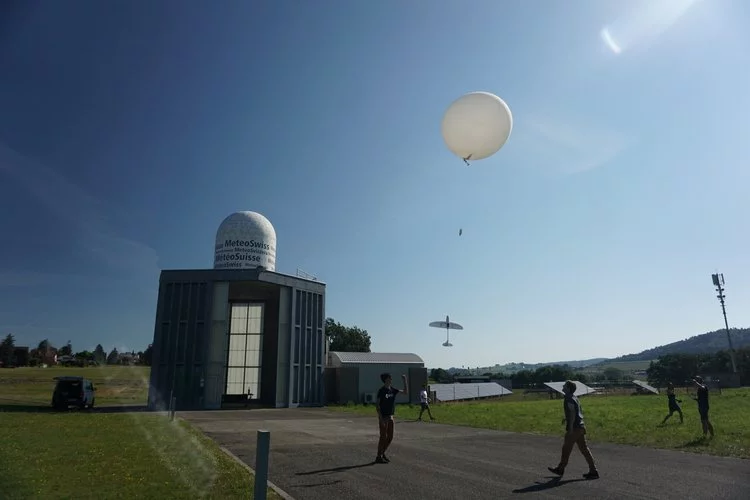Meteorology may not seem like an eco-unfriendly field, but it does need to clean up its act in at least one way. A new high-tech glider could help it do so, by allowing single-use weather-balloon-carried devices to be reclaimed and reused.
Twice every day in countries around the world, battery-powered telemetry instruments known as radiosondes are carried into the atmosphere by helium or hydrogen balloons.
On their way up, the devices record data such as altitude, air pressure, temperature, relative humidity, and wind speed/direction. All of that information is transmitted to stations on the ground, where it's utilized in weather reports.
Once the balloon reaches an altitude somewhere between 100,000 and 115,000 feet (30,480 to 35,052 m), the low atmospheric pressure causes it to pop. Both the burst balloon and the radiosonde then fall back to the earth, most often landing in remote places like forests or oceans where they simply become trash.
According to Switzerland's EPFL university, 80% of the roughly 600,000 radiosondes which are launched around the world every year are never found. That's where the "glidersonde" is intended to come in.
Invented by EPFL micro-engineering master's student Yohan Hadji, the device is a small foam glider which houses a suite of electronics along with a standard radiosonde. Tipping the scales at 250 g (8.8 oz) and with a wingspan of 90 cm (35 in), it's small and light enough to be classified as a conventional radiosonde by Swiss aviation authorities.

The glidersonde is still carried into the atmosphere beneath a balloon, gathering and transmitting weather data along the way.
At a predetermined altitude, however, the device releases itself from the balloon and starts gliding back to the ground. In order to autonomously navigate its way back to its point of takeoff – or to some other preselected location – it uses a combination of GPS and the wind speed readings that it recorded on the way up.
Prototype glidersondes have already been tested in Switzerland approximately 60 times, in collaboration with the Swiss Federal Office of Civil Aviation. Each time, the device landed within 15 m (49 ft) of its target coordinates. Further testing under a wider range of weather conditions is now being planned.

As an added bonus, because the glidersonde system allows radiosondes to be reclaimed, they can also be reused – the gliders themselves can likewise be reused, up to 50 times. Currently, even when used radiosondes are eventually recovered, they've been left exposed to the elements too long to be serviceable.
The technology is now being commercialized via Hadji's EPFL spinoff company, R2Home. It's worth noting that a similar but unrelated system, GITPO RPAS, is being developed by Landing Zones Canada Inc.
You can watch a glidersonde's flight back to its base in the video below.





